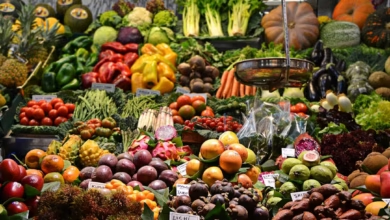Inside the Oil Refining Journey: How Crude Oil Becomes Fuels and Petrochemicals—and Its Impact on Global Oil Prices, Supply Chains, and Sustainable Technologies

The journey of crude oil from deep beneath the earth’s surface to the gasoline in your car or the jet fuel powering international flights is a story of intricate science and global commerce. Oil refining is the complex process that transforms raw crude oil into valuable products such as gasoline, diesel, jet fuel, and essential petrochemicals, fueling not only vehicles but modern life itself. As oil market trends ebb and flow, driven by OPEC decisions, shale oil production, offshore drilling advances, and shifting global oil trade, the way crude oil is refined plays a crucial role in determining oil prices and the stability of oil supply chains. At the same time, the environmental impact of oil and the urgency for cleaner oil technologies and oil alternatives like biofuels are shaping the future of the downstream oil sector. This article explores the key stages in the oil refining process, examines how refining shapes global oil prices and supply chains, and investigates the innovative technologies and environmental strategies redefining the sector for a more sustainable tomorrow.
- 1. From Crude Oil to Petrochemicals: Key Stages in the Oil Refining Process
- 2. Global Oil Market Trends: How Refining Shapes Oil Prices and Supply Chains
- 3. Environmental Impact and Innovation: The Future of Oil Refining Technologies and Alternatives
1. From Crude Oil to Petrochemicals: Key Stages in the Oil Refining Process
Transforming crude oil into valuable petrochemicals involves a series of complex steps known collectively as the oil refining process. This journey from unrefined hydrocarbons to widely used products such as gasoline, diesel, jet fuel, and plastics is central to the downstream oil sector and is influenced by oil market trends, global oil trade, and regulatory factors.
First, crude oil arrives at refineries via oil pipelines, oil transportation vessels, or storage facilities. The initial stage, called distillation or fractionation, heats crude oil to separate it into different components based on boiling points. Lighter fractions—like naphtha and kerosene—rise to the top of the distillation column, while heavier ones, including fuel oil and bitumen, remain at the bottom.
After distillation, additional processes improve yields and quality to meet specific market and environmental demands. For instance:
– **Cracking:** Large hydrocarbon molecules are broken down into smaller, more useful ones, such as those needed for gasoline and diesel. Technologies like catalytic cracking and hydrocracking are critical for maximizing fuel production from limited oil reserves and adapting to shifts in oil consumption.
– **Reforming:** Low-octane naphtha is converted into higher-octane components for gasoline, supporting energy security and adapting to varying oil prices.
– **Blending:** Various refined streams are combined to create products that meet government oil regulation and compliance standards, including specifications for biofuels and oil alternatives.
Once primary fuels are refined, some fractions enter secondary processes to produce petrochemicals—building blocks for plastics, fertilizers, and synthetic fibers. This petrochemical production reflects global oil market trends and fluctuates with oil price hedging and oil investing strategies. Feedstocks like ethylene, propylene, and benzene are derived from both naphtha and lighter gases separated in the refinery, linking natural gas and oil field services to petrochemical supply chains.
Throughout these stages, oil refineries must address environmental impact of oil, integrating cleaner oil technologies and emissions controls. The industry faces evolving challenges tied to OPEC policies, oil geopolitics, environmental regulations, and the push for renewable energy sources. As the oil sector balances demand, alternative energies, and oil exploration in unconventional resources like shale oil and oil sands, refining remains a crucial link connecting raw crude to countless products fueling modern economies.
2. Global Oil Market Trends: How Refining Shapes Oil Prices and Supply Chains
The global oil market is a complex and finely balanced system in which oil refining plays a pivotal role in determining oil prices, shaping supply chains, and driving broader market trends. Refining is the process that converts crude oil into valuable products such as gasoline, diesel, jet fuel, and petrochemicals, directly influencing global oil trade and energy security.
When refining capacity aligns with global oil consumption patterns, supply chains remain resilient and price volatility is minimized. However, disruptions—such as refinery outages, stricter oil regulations, or shifts in environmental compliance standards—can create bottlenecks in downstream oil markets, pushing oil prices higher and impacting oil investing decisions. Major oil-producing regions like those controlled by OPEC, as well as emerging players in shale oil, offshore drilling, and oil sands, must closely monitor refining margins to balance crude oil exports and manage national oil reserves.
The interplay between crude oil supply and refined product demand is also affected by transportation logistics, including oil pipelines, tankers, and storage infrastructure. Geographic mismatches—where growing demand regions lack refining capacity—lead to increased oil transportation across continents, exposing supply chains to risks ranging from natural disasters to geopolitical tensions. Oil geopolitics further complicate the picture, as strategic decisions around oil field services, oil exploration, and compliance can reverberate across the global market, affecting everything from oil price hedging strategies to investment in oil technologies and alternatives like biofuels and natural gas.
Environmental concerns are another driving force behind global oil market trends. The environmental impact of oil refining has prompted calls for cleaner technologies and a shift toward oil alternatives, shaping future regulation and compliance requirements. This, in turn, influences downstream operations and the strategic direction of major energy companies.
Ultimately, the efficiency and adaptability of oil refining infrastructure is a critical lynchpin in global oil supply chains. The ability to respond to emerging market dynamics, such as fluctuations in oil consumption or the adoption of alternative fuels, will continue to shape oil prices and energy security worldwide.
3. Environmental Impact and Innovation: The Future of Oil Refining Technologies and Alternatives
As environmental concerns and regulatory pressures intensify, the oil refining industry is experiencing a profound transformation. Traditional oil refining processes have long faced scrutiny for their significant carbon emissions, water usage, and the release of pollutants that impact air quality and public health (IEA, 2023). The environmental impact of oil is now central to global discussions on energy security, oil regulation, and oil compliance, compelling downstream oil operators and policymakers to seek innovative solutions.
Recent advancements in oil technologies are driving a shift toward cleaner, more efficient refining methods. Refineries are increasingly adopting carbon capture and storage (CCS) systems to reduce greenhouse gas emissions, while also investing in advanced catalysts that minimize waste and boost energy efficiency. Digitalization, AI, and data analytics are further optimizing oil supply chains, from oil transportation to oil storage, enabling real-time monitoring of emissions and resource usage. These innovations not only help refineries comply with stricter environmental standards but also provide a competitive edge in the global oil market trends.
Meanwhile, the search for alternatives to conventional oil products has accelerated. Biofuels, synthesized from organic materials, offer a promising supplement to traditional fuels like gasoline and diesel. Oil companies are also exploring petrochemical diversification—such as producing plastics, fertilizers, and other chemicals—to offset fluctuations in oil prices and changing oil consumption patterns. In regions rich in oil sands or shale oil, technological breakthroughs are reducing the environmental footprint but still face criticism over water usage and land impacts (World Resources Institute, 2022).
Renewable energy sources and oil alternatives, such as hydrogen and natural gas, are becoming increasingly viable. Global initiatives and OPEC collaborations are influencing oil geopolitics, often shaping investment in future-facing refining infrastructure. Oil field services are integrating sustainable practices, particularly in offshore drilling and oil exploration, to minimize ecological damage and enhance energy security.
Investors and stakeholders in oil investing must now pay close attention to not only traditional metrics like oil reserves and oil price hedging but also the environmental impact of oil operations. As society’s expectations shift, the oil refining sector’s future will depend on its adaptability—balancing economic objectives with sustainability. Regulatory developments, public pressure, and competition from alternative energy sources ensure that innovation will remain at the core of oil refining’s next chapter.
References:
International Energy Agency. (2023). The Role of Refining in a Net-Zero Energy System. https://www.iea.org/reports/the-role-of-refining-in-a-net-zero-energy-system
World Resources Institute. (2022). Innovations in Oil Sands and Shale Oil Extraction Technologies. https://www.wri.org/research/oil-sands-shale-oil-innovations
In summary, understanding the oil refining process is essential for anyone interested in the complex journey of crude oil from its extraction to its transformation into vital products like gasoline, diesel, jet fuel, and petrochemicals. Each stage of the refining process directly influences global oil supply chains, oil prices, and the patterns seen in oil market trends. As OPEC decisions, shale oil expansion, offshore drilling, and global oil trade continue to shape oil geopolitics and energy security, refiners must adapt not only to market dynamics but also to tightening environmental regulations and compliance standards.
Innovations in oil technologies and the integration of oil alternatives like biofuels and natural gas are pushing the industry toward a more sustainable future, aiming to reduce the environmental impact of oil and diversify energy sources beyond traditional crude. The growing importance of oil storage, downstream oil operations, and robust oil transportation networks underlines the significance of maintaining efficient and secure oil reserves.
For investors and industry stakeholders, staying informed about oil market trends, oil price hedging, and the development of new oil field services is critical to navigating the evolving landscape. As the world weighs the necessity of oil consumption against environmental priorities, the future of oil refining will depend on continued innovation, strategic regulation, and global collaboration.
Ultimately, the path ahead for the oil industry lies in balancing immediate energy needs with long-term sustainability, leveraging next-generation oil exploration and refining technologies while pursuing viable oil alternatives to ensure a stable, cleaner energy future.
References
Please add the specific sources cited in the main article (e.g., IEA reports, industry news, academic research) to complete this section.





